Mobile gas tank: purpose, design and installation features, placement requirements
What if gas is needed, but connection to a centralized highway is not expected in the near future? A mobile gas holder can be an excellent solution - a mobile unit is used for temporary gasification of various objects.
Before deciding to purchase such a unit, you need to familiarize yourself with the features of the selection, installation and operation of a mini gas tank, agree? All these questions are detailed in our article.
The content of the article:
What is a mobile gas tank?
A gas tank is a container for storing liquefied gas, which is a mixture of butane and propane. Such devices are used to organize autonomous gas supply of houses and plots. If you install the gas holder on a frame with wheels, you get a convenient mobile option, the possibilities of which are much wider.
The capacity of the mobile LPG storage is usually about 600 liters. This is enough to immediately replace 12 ordinary gas cylinders. Although, if desired, you can find a device with a capacity of 1000 liters or 1200 liters, and even very small ones - 480 liters. The frame for transporting a gas tank is a caravan modified for these needs.
The tank is made of durable galvanized steel and is securely mounted on a frame with a wheeled chassis, single or biaxial. This design can be attached as a trailer to the car and transported to the right place. Of course, it is impossible to connect a gas holder located on an unstable trailer with gas appliances.
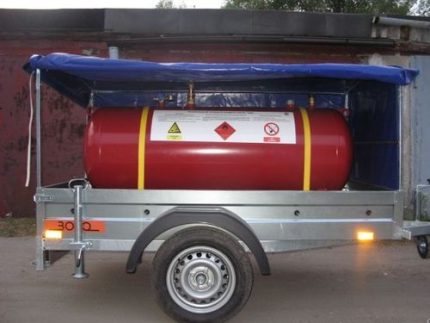
First you need to fix the position of the structure. For this, special stops are intended - outriggers, which usually happen in three or four. After the position of the device is securely fixed, you can use it in accordance with the purpose.
The contents of the gas tank are a mixture of liquefied gases, hermetically sealed in a vessel.Natural or artificial gas mixture is contained in a closed tank under a pressure of 1.6 MPa.
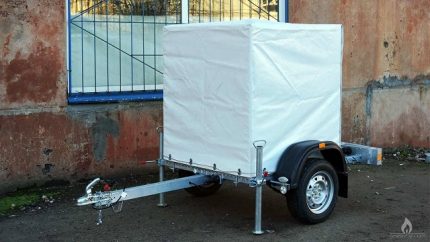
Among the advantages of using a gas tank can be noted:
- mobilityopening up the possibility to use the gas tank not only at one, but also at several facilities for solving various problems;
- decent capacity, which can vary between 500-1200 l;
- easy installation, with some experience, you can connect to the gas system of the house yourself, following the manufacturer's instructions;
- ability to choose refueling option: at a gas station or using a special car;
- convenient control system, device status information is displayed on a panel with indicators, etc.
The disadvantages of the device include the rather high cost of the gas storage tank.
Nevertheless, the use of a mobile gas tank according to customer reviews is much more convenient than the use of a set of standard cylinders with a similar total capacity. As for security, with proper operation of problems in this regard, almost never arises.
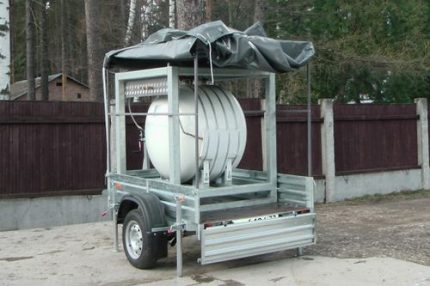
An important point in the configuration of the gas tank on wheels is the presence or absence of forced heating of the tank. The fact is that even in not very severe frosts, the evaporation process of even the “winter” mixture of LPG can significantly slow down.
In the southern regions, where winters are warm, this problem is not relevant, but it is recommended that residents of the northern regions choose a device that is equipped with a forced heating function.
To ensure a normal temperature of evaporation of liquefied gas in the winter, the heating system of a mobile gas tank, which does not have additional functions, is connected to the heating circuit of the object to which gas is supplied. Built-in heating is carried out using an autonomous boiler installation.
This device allows you to use LPG in the most rational way, for its operation does not need electrical energy. But there are modern models in which heating is carried out using electricity. For this, a special carbon fiber film is provided, compact and safe.
The control unit automatically switches off the mini-boiler room in order to avoid a dangerous level of heating. In addition, there is a safety valve that is activated when the pressure inside the tank reaches a critical level.
Excessive pressure (more than 500 kPa) can lead to deformation of the tank and even to a violation of its tightness.

A container with combustible contents should be protected from natural factors. For this, the gas holder is covered with a tent made of polyvinyl chloride from above. This material tolerates heat and cold, and rain, and other weather changes.
To connect the tank with LPG to gas equipment, corrugated pipes are used, which are equipped with high-quality detachable connections.
These nodes are designed in such a way that when they open, any gas leakage is eliminated, which avoids unnecessary loss of coolant when connecting the gas tank to the object, shutting down, refueling, etc. Shut-off and control valves almost completely eliminate the likelihood of an accident.
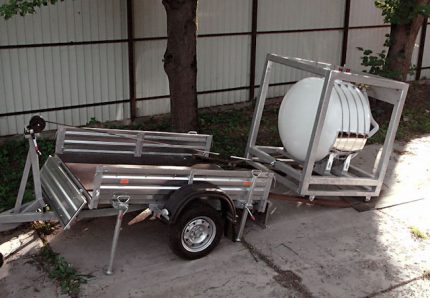
Mobile gas tanks are usually equipped with gas hoses, which are enclosed in a layer of insulating material. This additionally protects the liquefied gas from temperature changes during refueling and when moving gas to the object.
Each gas tank is equipped with a gearbox. This device is designed to maintain a stable level of gas pressure at the outlet, which contributes to the integrity of the connected gas equipment.
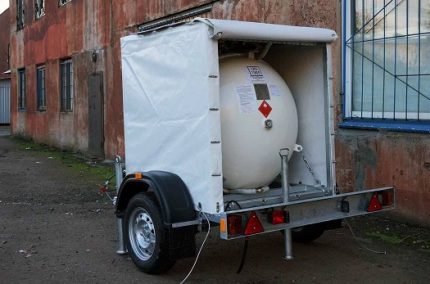
In order to save money, some owners of private homes are thinking about acquiring a gas tank that was already in use. This is a possible option, but keep in mind that each device has a deadline.
In addition, it is not always possible to obtain information about how the previous owner handled the gas tank. In any case, you can make such a purchase only after examining the device by an experienced specialist.
How LPG evaporates
Why is such a device used a mixture of liquefied gases? The fact is that propane and butane react differently to an increase in ambient temperature.
Propane evaporates better, so the LPG mixture is made in two versions - summer and winter. In the first case, the ratio of propane and butane in the composition is approximately the same, but for use in winter, a composition in which the propane content is 90% is more suitable.
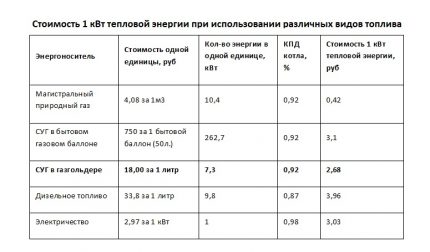
What will happen if during severe cold weather the gas tank works without heating? Butane, which is contained in a mixture of liquefied gas, stops evaporating. As a result, only propane, the second element of the mixture, enters the system.
After all propane has been used, in the tank part of the volume (30-50%) will remain filled with unused butane. It would be reasonable to pump this gas out of the tank in order to free up useful space, but this is a troublesome business, they usually don’t do this, but simply refuel the cylinder with a new portion of LPG.
If you continue to use the tank in the wrong mode, gradually its volume will be completely occupied by butane. The use of a gas holder will become impossible until the unnecessary gas is completely pumped out, which will lead to significant additional costs.
You should not use a certain type of mixture of LPG in the wrong period for it. The composition will evaporate either too slowly or too quickly. This will adversely affect the efficiency of the equipment and its condition.A fairly wide temperature range is considered acceptable for the storage of LPG: from -40 ° C to + 45 ° C.
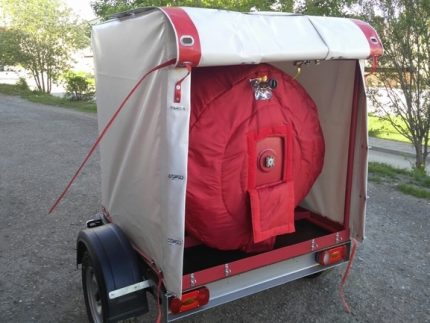
In the process of refueling a gas tank, one may encounter dishonesty of a gas supplier. For starters, this is the refueling of the tank to full volume. To successfully deceive the buyer, the unfortunate craftsmen simply twist the counter so that it shows the wrong numbers. The second common cheating option is to refuel the summer mixture instead of the winter one.
The fact is that propane is more expensive than butane. The summer mixture contains 50% butane instead of 15%, which are necessary for the winter mixture. As a result, the tanker sells a cheap summer train for the price of a more expensive winter train.
Since the autonomous version of the gas tank has small volumes compared to stationary models, it is more difficult to cheat with volumes, because the difference will be noticeable.
It’s easier to trick the owner of a stationary gas tank and steal 30-40 liters from a 4000 liter tank, but if the meter is twisted, then cheating is possible on small volumes. Therefore, it does not hurt to check the level gauge after refueling, if it is in the gas tank.
Where do you use mobile gas storage
Mobile gas tanks are used for a variety of purposes:
- at construction sites;
- for garden houses;
- at the cottages;
- for trailers and cabins;
- as a means of emergency gas supply, etc.
For example, on a plot of five to six hundred square meters, the technical conditions do not allow to establish a stationary model, it remains either to carry cylinders or use the mobile version, which is much more convenient. It needs to be refueled less often and easier to use.
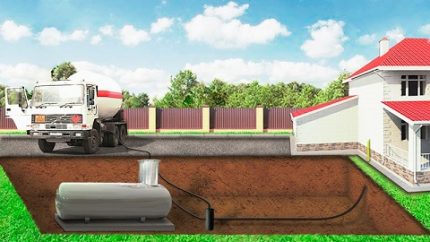
A boiler room can be powered from a mobile gas tank, they are used to perform gas welding, for roofing, such as drying surfaces, installing deposited materials: roofing material, its bitumen-polymer analogues, etc.
In combination with a good gas convector designed for economical fuel consumption, a mobile gas tank will be an excellent choice for heating garages, utility rooms, cabins and other similar objects.
Features of installation and operation
It’s much easier to install a mobile gas tank on a trailer with electric heating than installation of a stationary model. Special permits from the gas distribution company in this case will not be needed. But the trailed chassis, of course, must be properly registered with the traffic police.
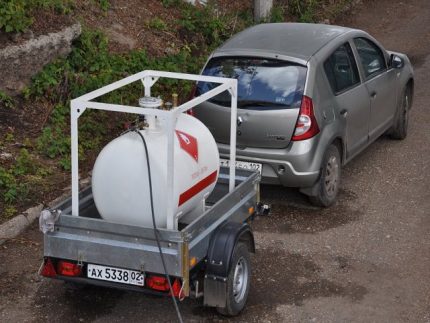
In this case, you must follow the same registration procedure that is used when accounting for ordinary automobile trailers of serial production.
When purchasing a gas holder, you should make sure that all the necessary documentation is attached to the tank, namely:
- certificate of quality;
- technical passport of the tank;
- vehicle passport;
- device instruction manual.
Permission to install a mobile gas tank is not required, however, the unit must necessarily have all the necessary certificates. If such documents are not available, the owner of the gas tank may be denied refueling with liquefied gas.
But the simplified registration procedure should not serve as a reason for negligent handling of the device, which refers to objects of increased danger.
Even before refueling and connecting the gas tank, you should carefully study the instructions for its installation and operation, and then strictly follow all the manufacturer's recommendations. To ensure that the gas tank is correctly and safely connected to the heating circuit or other equipment that consumes gas, it is best to invite an experienced specialist.
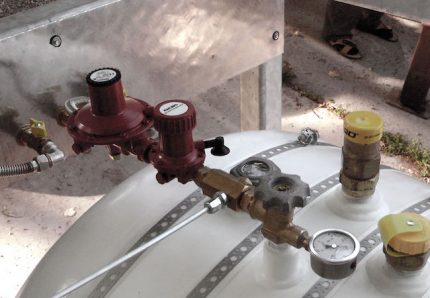
This is especially true if a heated model is selected, since a professional master will also set up a mini-boiler room. To independently connect a gas holder, first you need to carefully study the instructions and follow the recommendations contained in it.
Quick connectors allow you to connect your device in just a few minutes.
At the same time, gas leakage from the system and the ingress of external air into it are also excluded. There are no strict requirements for the placement of such a gas tank on the site.
Of course, the distance from the gasification object is limited by the length of the supply pipe. To ensure that the device lasts as long as possible without breakdowns and accidents, it should be installed in such a way as to exclude prolonged exposure to direct sunlight. Additional protection against precipitation does not hurt.
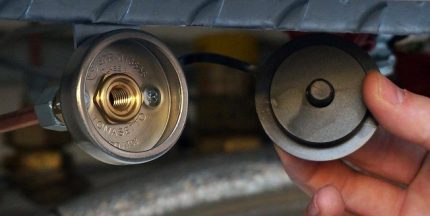
Another important point is the regulatory equipment. The device must be installed in such a way as to exclude access to control for unauthorized persons, for example, for children. It also makes sense to think about the likelihood of theft of a wheeled chassis with a gas tank and take measures to protect it.
Refueling a mobile gas tank can be done in two ways: using a gas tank or at gas stations.
This distinguishes the mobile gas tank from the stationary model, for refueling which you always need to call the gas filling mobile station.
No need to wait until the tank is empty, it is recommended to refuel at a time when less than 20% of the LPG of the total tank volume remains in the gas tank. At the gas station, you can fill the device with a standard filling gun.
If you have not yet decided on the method of gasification at home, and are thinking about buying a gas tank, then we recommend that you read the articles:
- Which is cheaper and better - a gas tank or main gas? Comparative review
- Varieties of gas holders: the basics of classification + an overview of popular brands
Conclusions and useful video on the topic
This video demonstrates the procedure for installing and connecting a mobile gas storage, which really takes a few minutes:
Here you can find general information on the operation of devices of this type:
A mobile version of a tank for refueling, storing and using gas is an extremely convenient item. No need to dig a pit or go through a long registration procedure, the house can be connected to gas in just a couple of days. In some situations, this is the only way to ensure gasification of the facility.
Have experience using mobile gas tanks? Or have questions about the topic? Please share your opinion, leave comments and participate in discussions. The contact form is located below.

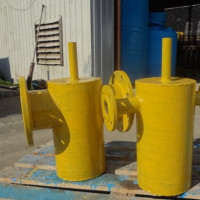 Gas condensate collectors on the gas pipeline: structure and purpose of the condensate collector + nuances of installation and maintenance
Gas condensate collectors on the gas pipeline: structure and purpose of the condensate collector + nuances of installation and maintenance 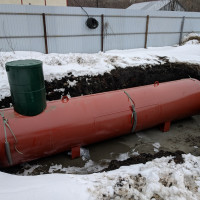 Frozen gas holder: common causes and ways to quickly fix the problem
Frozen gas holder: common causes and ways to quickly fix the problem 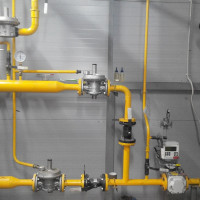 Thermal shut-off valve on the gas pipeline: purpose, device and types + installation requirements
Thermal shut-off valve on the gas pipeline: purpose, device and types + installation requirements 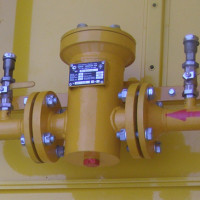 Gas filters: types, device, purpose and features of the choice of filter for gas
Gas filters: types, device, purpose and features of the choice of filter for gas 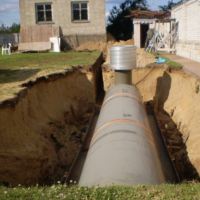 Gas holder for a summer residence: mini options for arranging summer cottages
Gas holder for a summer residence: mini options for arranging summer cottages  Disconnecting devices on gas pipelines: types of valves and the features of its installation
Disconnecting devices on gas pipelines: types of valves and the features of its installation  How much does it cost to connect gas to a private house: the price of organizing gas supply
How much does it cost to connect gas to a private house: the price of organizing gas supply  The best washing machines with dryer: model rating and customer tips
The best washing machines with dryer: model rating and customer tips  What is the color temperature of light and the nuances of choosing the temperature of the lamps to suit your needs
What is the color temperature of light and the nuances of choosing the temperature of the lamps to suit your needs  Replacement of a geyser in an apartment: replacement paperwork + basic norms and requirements
Replacement of a geyser in an apartment: replacement paperwork + basic norms and requirements
Can mobile gas holders be used near railways (less than 15 m)?
Very helpful article. Where can I clarify manufacturers and configuration? Possibility of using a tank with an evaporator? Delivery to the regions?